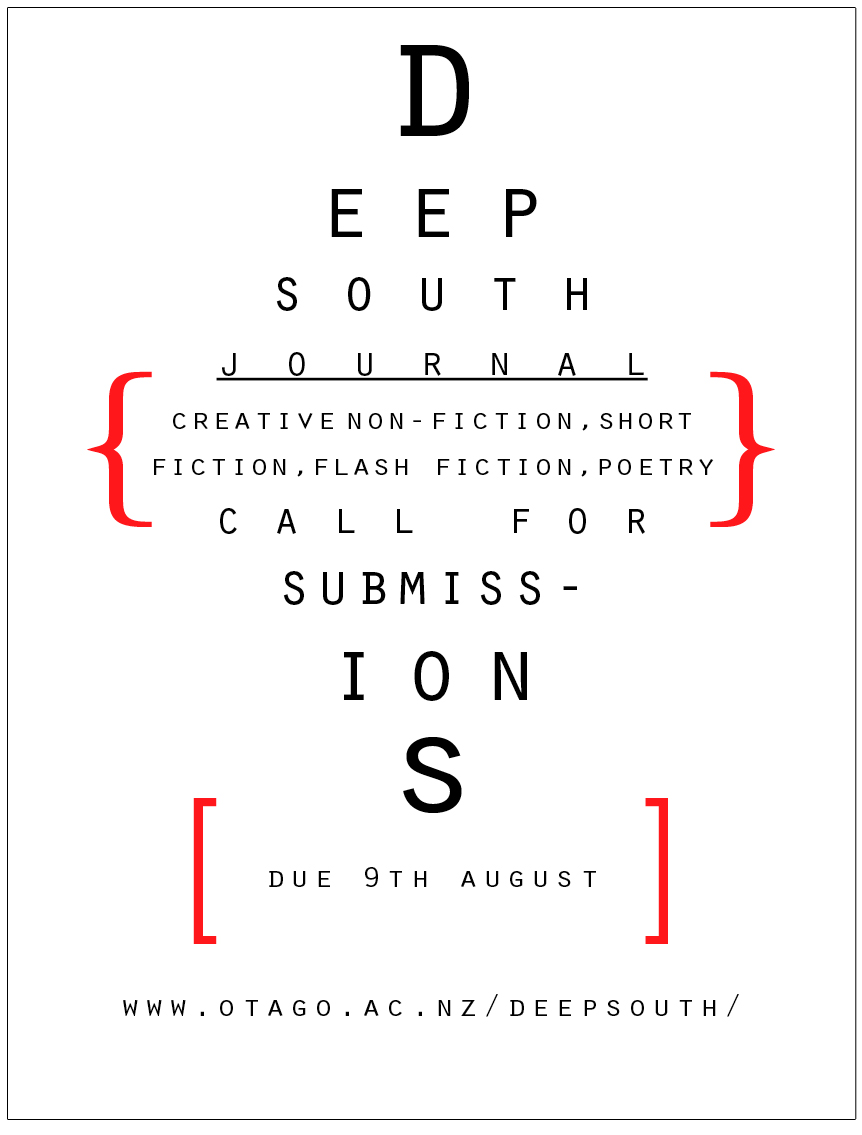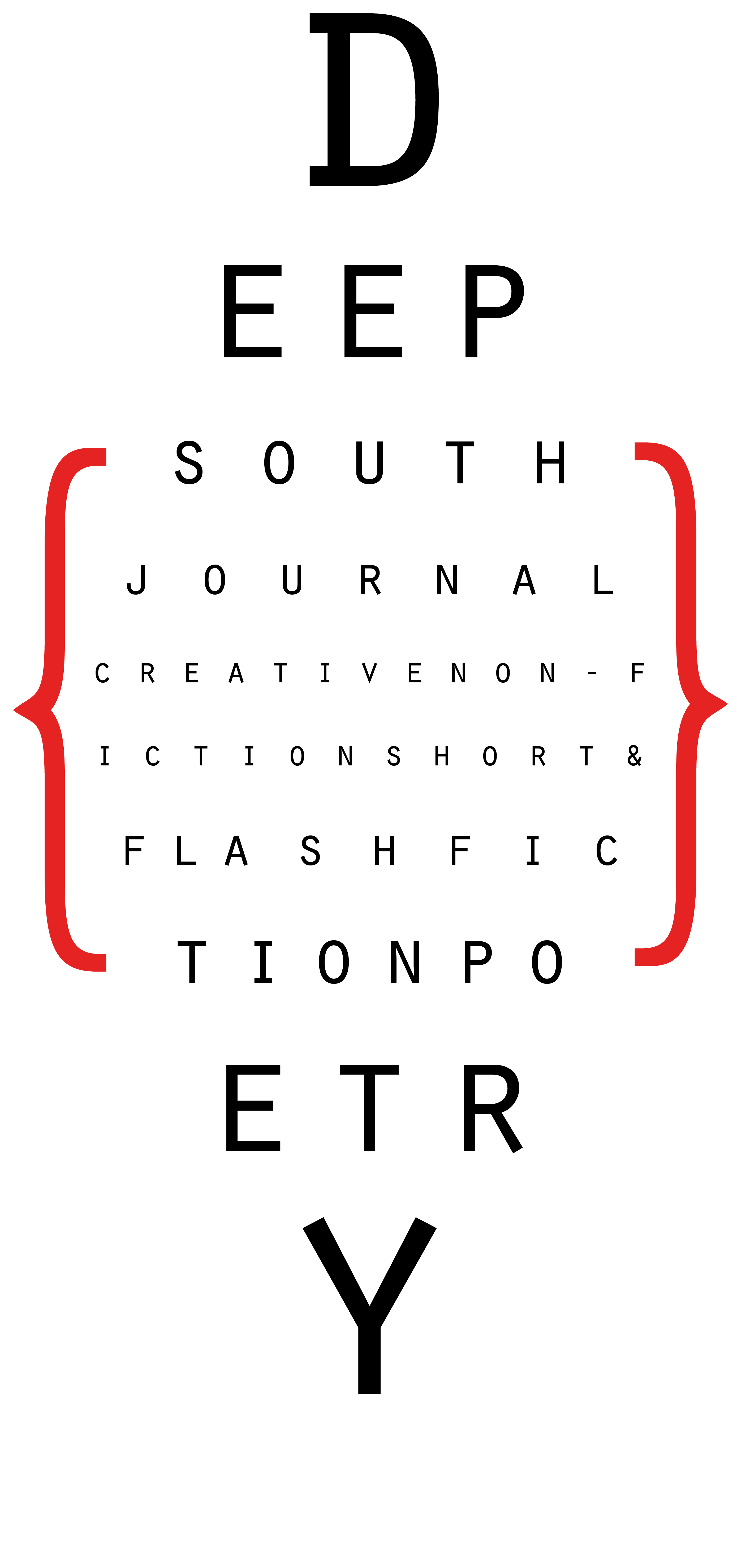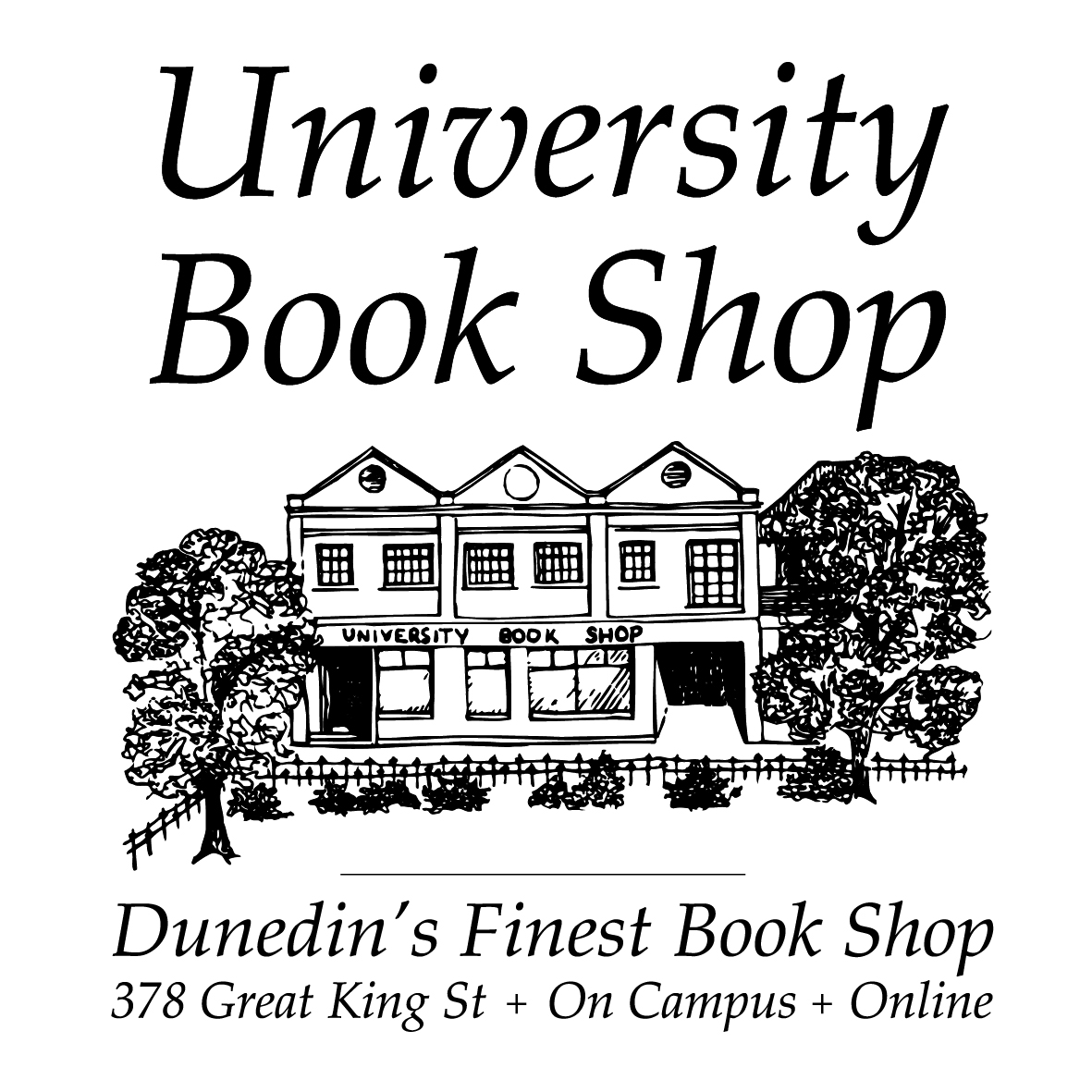deep south 2013
{ }
dsj fiction
editorial
After a two-year hiatus, we came to Deep South knowing it needed a new start. Aiming to be democratic, we sent out a call to interested parties: what did they want us to prioritise? What did they want us to change? What did they think the journal should be doing: showcasing local writing, or initiating a larger conversation between writers? Should it be contributing to an academic forum or providing room for writers to publish outside of that sphere?
While we received a variety of responses, one of the most common requests was for Deep South to advertise for international submissions. We sent calls for submissions to listservs, through tweets, in international call for papers lists, to institutions nationally, and on smart new posters plastered all over Dunedin.

We also opened the journal to a wider range of categories, inviting submissions of, “Creative non-fiction, short fiction, flash fiction (up to 500 words) and poems (excluding epics).” Initially, we thought we were being very clear in asking for specific genres. Unexpectedly, however, as submissions began to arrive, we started to question our categorisation, asking, for example, what do we mean by creative non-fiction? Is it a clever essay, journalism on odd topics, science fiction, academic biography?
The submissions we received under creative non-fiction didn't seem to work, as they sat in some murky space between journalism and academic criticism. Some pieces struck us as more academic than the brief for Deep South, but who is to judge? What is creative non-fiction? We learnt that it's a mixture of the personal, informative and critical, and written with a stylistic freedom. This still didn't seem definitive to us. Are New Yorker articles creative non-fiction? Is a feature story in the Listener creative non-fiction? The more we read, no matter how engaging and well written the essays, the more we realised we still don't know the answer. Nonetheless, we did select one non-fiction piece that we all enjoyed, and which may or may not be creative non-fiction.
We encountered the same ambiguity with flash fiction. Our understanding was that “flash” articles are compact stories (under 500 words). We assumed we'd know one when we read it. However, the category appeared to blend across into poetry, particularly prose poetry. It just goes to show how difficult it is to tell a story in so few words.
Another change we augmented was blind reading of all submissions. This resulted in a number of new authors being included, though some well-known names were not. Knowing so many of the people that were submitting, it was imperative that neither of us knew whose work we were reading. Otherwise, we felt we could have been swayed, either way, by the reputation behind the names or by the fact the author was someone we knew and liked. As it turned out, the blind reviewing gave us a sense of freedom. We've also since been told by some of those who weren't selected, that they appreciated that their work might not have been ready for publication. Even so, we inevitably brought our experiences and histories, projections, desires and aversions to the reviewing process. Taking away the possibility of knowing or not knowing the author meant there was one less variable to consider.
Despite the open call for submissions—with no theme in particular—much of the fiction we selected happened to be stories about childhood or teenage life. One story describes the quirks of a formative adolescent relationship in 1970s Christchurch. In another story, a child describes what may or may not be a car-ride with his father who may or may not have just robbed a bank. One tale provides an intergenerational view of New Zealand masculinity through a young man's account of his relationship with his grumpy father. The issue of gender emerges again in a story of a “tomboy” who likes cricket, and tries to make sense of things. Another story explores the psychic dislocation of a boy living with an aunt who is out of her depth, while another locates the confusion of a child who's house is undergoing a drug-search.
The poetry is of course varied. We encounter poodles and airports, rhododendrons and translations, historical inventories and nostril breathing. We go from ploughing a field, to selling “something” on Trade Me, from the “sundown streets of Bemidji” to a drug dealer's front door. There's free verse, prose, concrete, and experimental poetry, plus a few traditional stanzas.
An interesting result of the curatorial process is the diversity of our selection, which spans the ludic and the solemn, the formal and the experiential, the surprising and the subtle. Is this a sign of our Catholic tastes? The works we have chosen vary to such a degree, we started to wonder if we had possibly exerted too little authority. If we weren't attracted to a certain type of writing, then where was our curatorial input? Then we remembered the things that didn't work for this issue: the confessional, the flowery, the romantic, and New Zealand domestic vignettes. There are no references to nikau palms, French doors, or babies cooing at paua-shell mobiles in this issue of Deep South. Is there a pattern though? Would someone else have picked completely different pieces? We will, of course, never know the answer to this question.
We can't articulate the final decision making process, but what the works in this volume have in common is first, our picking of them, and second, an element of contagion where each poem appears to inform the next. It's not necessarily a commonality; maybe it's just the vibe of the thing. Nevertheless, we feel that the many parts do constitute a whole, and that this issue of Deep South offers a comprehensive survey of New Zealand writing today.
We have also introduced the Burns Interview as a permanent fixture to Deep South, as we realised the asset of having a writer in residence here at the University. The impetus for the interview is to engage with writers by exploring the life of a writer, and writing in New Zealand, and to get a feeling for contemporary work in progress. The inaugural interview is with poet David Howard, the 2013 Burns Fellow. David subsequently edited what began as a recorded conversation, one that was both elegant and impromptu, changing it into a more formal written question and answer format. This was his writing process. Both in person and print we are glad we couldn't shut him up.

We're grateful to a number of people: Liz Lammers and Chris Prentice from the English department of the University of Otago; the English department for its financial support; Cy Matthews for the hours he invested in making sure the submissions were read blind, and Cassie Ringland-Stewart for her assistance (both are previous editors of Deep South). Thanks also to Gilbert May for his work revamping the design of Deep South, and to Greg Adamson for editorial consultation. Finally, thanks to the University Book Shop for hosting our launch and to the Otago University Press for sponsoring the event.
Lynley Edmeades is a poet, reviewer and editor. Her work has been published widely in New Zealand and overseas. She currently lives in Dunedin where she is working on a doctoral thesis, looking at poetry as sonic art.
Catherine Dale teaches English literature, language and critical theory at the University of Otago. She also facilitates a writing group loosely affiliated with the university.
{ back to deep south 2013 contents }



